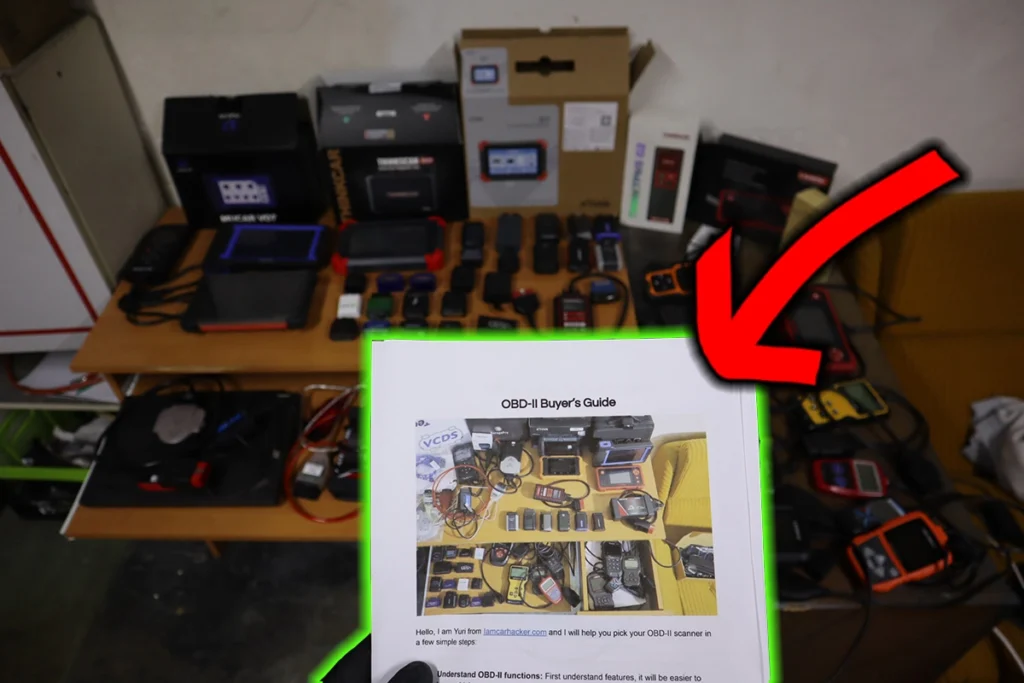Getting hands-on means we absolutely must talk about safety again. Seriously, this isn’t the boring part – this is the part that ensures you can keep diagnosing cars for a long time without getting hurt or damaging your car.
10 Safety Instructions to Never Forget When Diagnosing Cars:
- Secure the Vehicle: Always park on a level, firm surface. Engage the parking brake firmly. For extra security when working underneath or removing wheels, use wheel chocks on the wheels that will remain on the ground.
- Let It Cool Down: Engines, exhaust systems (especially catalytic converters!), radiators, and even brakes get extremely hot. Give components plenty of time to cool down after the engine has been running before you touch them. Burns are no fun.
- Disconnect the Battery (When Necessary):
If you’re doing any electrical work, replacing sensors, or working near airbags, disconnecting the negative battery cable is a critical step to prevent short circuits, sparks, or accidental deployment. Always disconnect negative first, reconnect negative last! - Use the Right Tool for the Job: Forcing the wrong size socket or using pliers instead of a wrench can strip bolts, damage parts, and cause the tool to slip, leading to injury. Have the basic tools and use them correctly.
- Identify What You’re Touching: Before you grab a hot exhaust pipe or accidentally put your hand on a moving belt, take a second to look around and identify potential hazards like hot surfaces, sharp edges, or moving parts if the engine is running.
- Wear Eye Protection:
Seriously, always. Dirt, rust flakes, dripping fluids, and unexpected sparks can cause serious eye injury in an instant. Get a comfortable pair of safety glasses and wear them consistently. - Ensure Ventilation (If Running Engine): Some diagnostic steps require the engine to be running. Only do this outdoors or in a garage with a certified, properly functioning exhaust ventilation system. Carbon monoxide is odorless and deadly.
- Keep Your Workspace Tidy: Tripping over tools, wires, or puddles of fluid is a quick way to get injured. Keep your immediate work area clean and free of clutter.
- Be Cautious with Fluids: Car fluids (oil, coolant, brake fluid, fuel) can be hot, pressurized, or hazardous. Wear gloves if needed, clean up spills immediately, and handle them with care. Note the color and smell of fluids as part of your diagnosis, but avoid prolonged contact.
- Know Your Limits & When to Stop: If a task feels beyond your skill level, you don’t have the right tool, or you’re unsure about the next step, stop! Consult a manual, watch more tutorials, or consider if it’s time to let a professional handle it. Pushing through uncertainty is risky.
Especially the last one. I know how it is when you are not 100% sure about what you are doing and you have the feeling that it is a bad idea.
But you keep pushing anyway, and you damage something in your car. I am definitely guilty of this.
If unsure, ask for advice, look up more information, or at least take a break first.
Making these 10 points a habit will not only keep you safe but also make your diagnostic efforts much more effective and less stressful. Safety isn’t just a rule; it’s the foundation of successful DIY work.
Stay safe out there while you learn!
P.S. I have a full DIY Mechanic video course (if you are a more video-visual learner), you can join HERE.
Free PDF: How to choose OBD2 scanner

I’ve made you a free PDF to choose the OBD2 scanner in 5 minutes.
✅ Which OBD2 scanner is best?
✅ Which type should you get (DIY, Pro, Hobby)
✅ What is the best scanner for the exact brand/feature (e.g best for BMW)
✅ How to get a Bi-Directional tool for as cheap as $40
✅ Discount coupons for scanners
PDF is 100% free and it is designed to help you pick a scanner in less than a few minutes! Not a boring 50-page guide.
Just tell me where to send it.

Hi, I am Juraj “Yuri” Lukacko. I got frustrated by unhelpful and scammy mechanics, so I decided to learn everything about car diagnostics myself. I test dozens of new car diagnostic tools every month along with learning new strategies to fix and customize cars. About Juraj Lukacko (Yuri)
